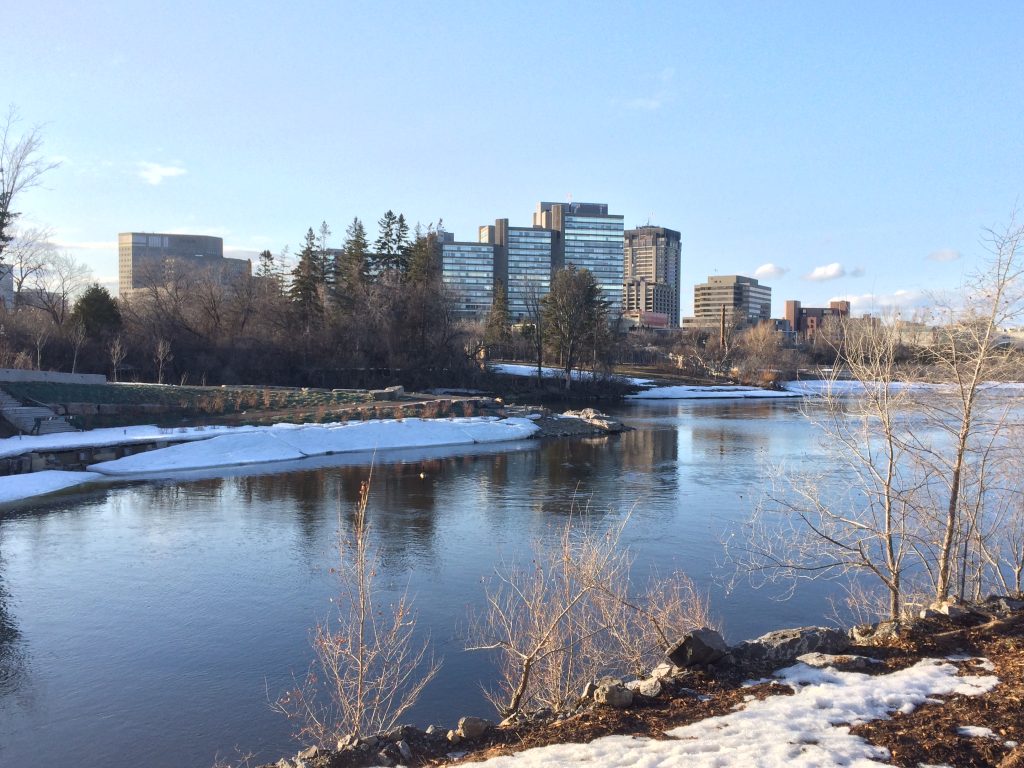Riverkeeper Looking for sewage solutions
By Ryan Curley
The Ottawa Riverkeeper has challenged young engineers, hackers and environmentally friendly youth to devise a way to give Ottawa residents live alerts about sewage overflows and spills into the Ottawa River.
The task is one of four that have been issued through the 2018 AquaHacking Challenge. The AquaHacking Challenge, supported by the Aqua Forum, is an annual competition during which teams compete to develop apps and other tech solutions to water issues affecting the Great Lakes and St. Lawrence Basin. The challenges were revealed at a March 21 event to launch this year’s competition.
Meredith Brown, the Ottawa Riverkeeper, explained during a follow-up March 29 webinar the challenge she has posed for AquaHackers: to create a display that would show real-time combined sewage and storm water overflows into the Ottawa River.
“This was a no-brainer,” Brown said during the webinar about the design challenge. “There’s a lot we can do to improve our systems.”
Currently, municipalities have to submit annual reports that detail what days wastewater was deposited into nearby rivers and lakes, how long the overflow lasted, the estimated volume of wastewater deposited and how many days per month wastewater overflows occurred.
Andrew Hall, a process technologist with wastewater collection systems for the City of Ottawa, said during the webinar that city staff monitor the combined sewers constantly. However, overflow events are not reported live to the public in Ottawa.
“We start to report the actual volume of an event within 24 hours after an event has concluded,” said Hall.
The City of Sudbury currently sends email alerts to its residents about wastewater overflows and sewer bypasses.
Utilities Kingston uses a real-time sewer overflow map that shows where on the Kingston waterfront an overflow is happening or has happened in the past 48 hours.
Brown praised the city for its work in reducing sewage spills into the Ottawa River, but said more needs to be done.
“Annual reporting doesn’t help people that are about to dive in the river,” Brown said during the webinar.
Hall said that it is important for the public to know when an overflow is occurring.
One combined sewer overflow outfall location in at LeBreton Flats, near Pooley’s Bridge, where a black post and sign can indicate a sewage spill is happening in that area by flashing a red light.
Downtown Ottawa’s sewer system is a combination of networks that go back as far as the 1880s.
The issue with Ottawa’s combined sewer and storm water system is that during periods of heavy rain or a spring melt it is unable to handle the combined volume of household wastewater and runoff. When this happens, there are 13 locations across Ottawa where the combined sewer can then overflow into the river.
As part of the Ottawa River Action Plan, a $232-million Combined Sewage Storage Tunnel — parts of which are currently being built in downtown Ottawa —will help to significantly reduce the amount sewage entering the Ottawa River, even during heavy rains and melts.
During the webinar, Scott Laberge, the city’s program manager of wastewater collection, said that over the past 10 years the city has reduced its combined sewage overflow volume by two-thirds, and the number of sewage overflows were cut in half.
Contestants are being given about 10 weeks to work on developing their solutions before the semi-finals of the Aquahacking competition begin. Then there will be several more months to refine the solutions before the competition final on Oct. 25.
The winning team will collect a $25,000 prize and help in producing a promotional video for their solution.

